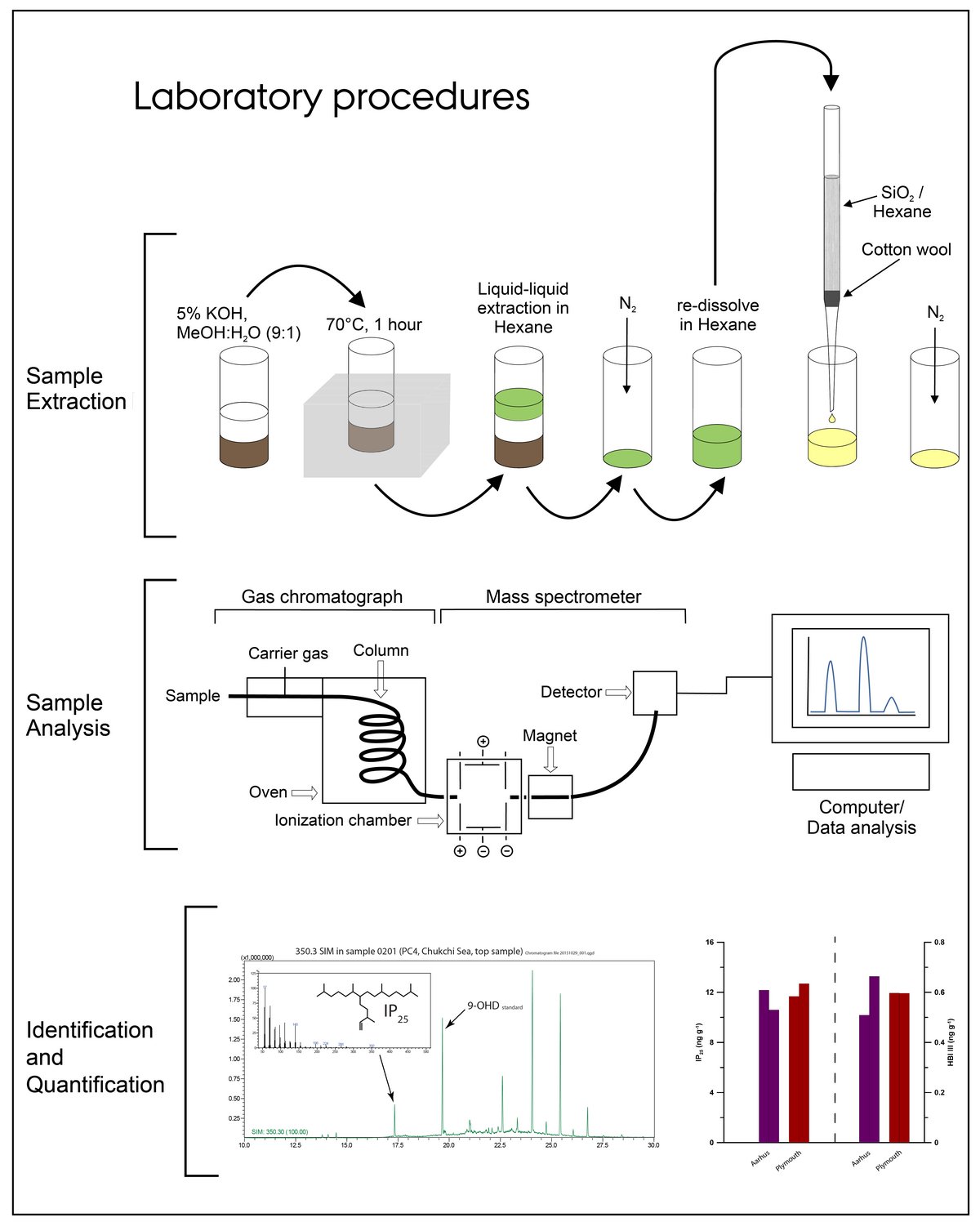Biomarkers are organic molecules produced by living things. We can use different properties of these molecules as proxies to reconstruct past climates and environments as they are preserved in the geologic record in soil, lakes, and marine sediment archives. In our lab, we use organic geochemical techniques to extract the biomarkers from sediment, isolate the compounds we are interested in, and measure the concetrations, distributions, and/or isotopes to generate paleoclimate records through time from archives all over the world. These techniques can serve as proxies for many climatic and environmental parameters, and we've described a few of our favorites here.
Rainfall and Temperature: Leaf waxes are produced by plants to protect their tissue and prevent evaporation. These hydrocarbon compounds, including n-alkanes and n-alkanoic acids, contain information on the conditions experienced by the plant during photosynthesis. Leaf wax hydrogen isotopes are driven by the water cycle, mostly affected by the amount of rainfall in some regions and the temperature in other regions.
Vegetation: These same leaf wax compounds can be measured for their carbon isotopes. C3 and C4 plants fractionate the carbon they use during photosynthesis differently. We can thus analyze the carbon isotopes of waxes in the past to decipher what types of plants were living on the landscape. The distributions of the chain lengths of leaf waxes can also provide information on vegetation structure in the paleo-record.
Fire: Polycyclic aromatic hydrocarbons (PAHs) are produced by incomplete combustion, and the concentration of PAHs in the geologic record indicates both fire frequency and intensity.
Sea Ice: IP25 is an HBI biomarker produced by special species of sea ice diatoms that live in saline layers in the lower surface of arctic sea ice. Together with other biomarkers, such as sterols formed by phytoplankton or HBI III, IP25 allows semi-quantitative reconstruction of past sea ice dynamics and has been determined in sediments up to Miocene age. See below for a description of the procedures we use to measure IP25.
